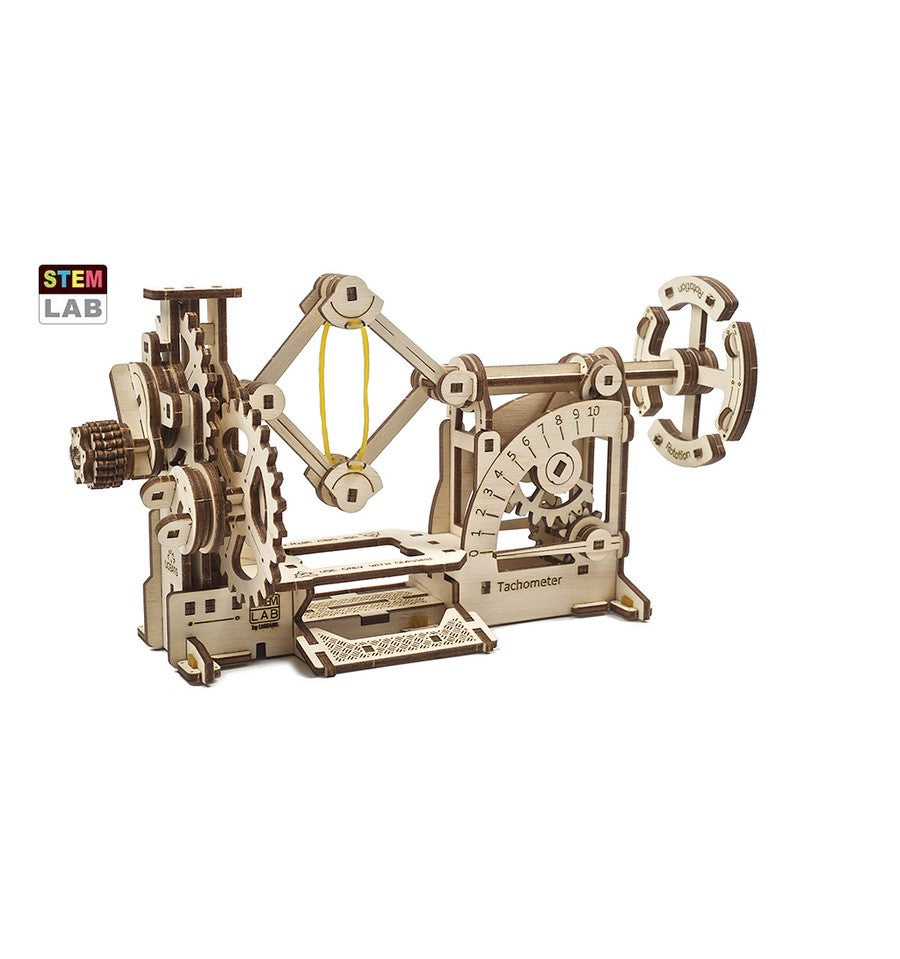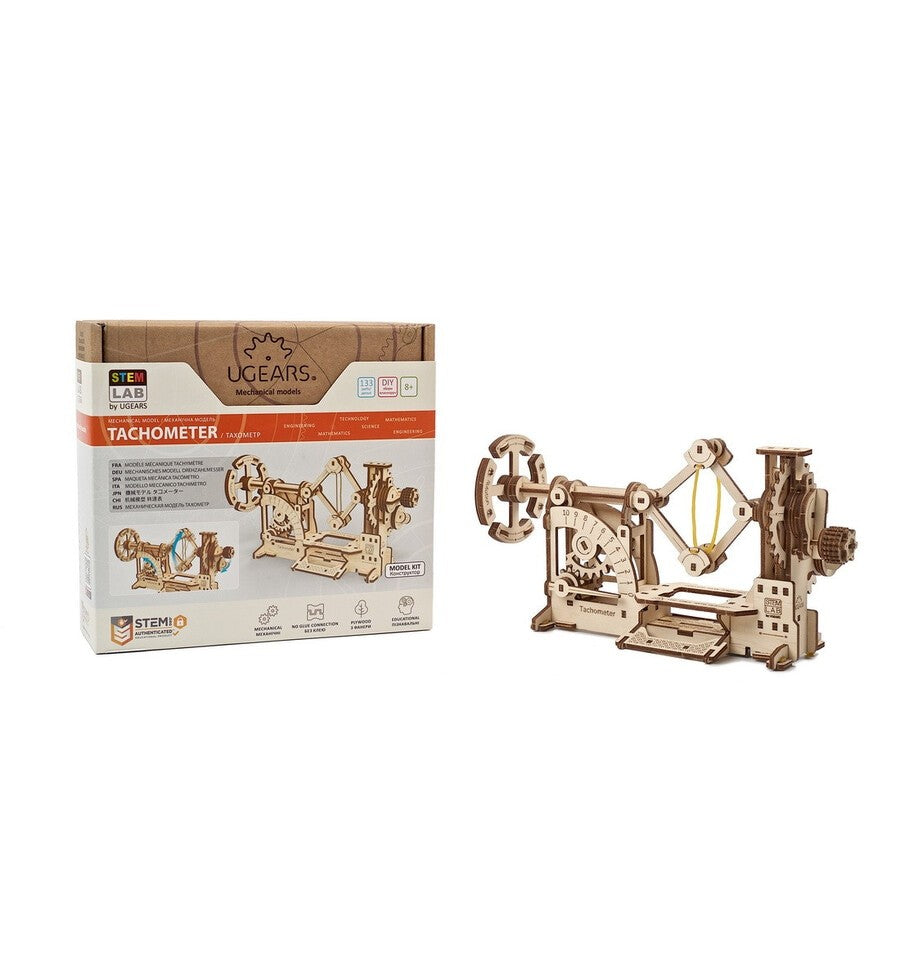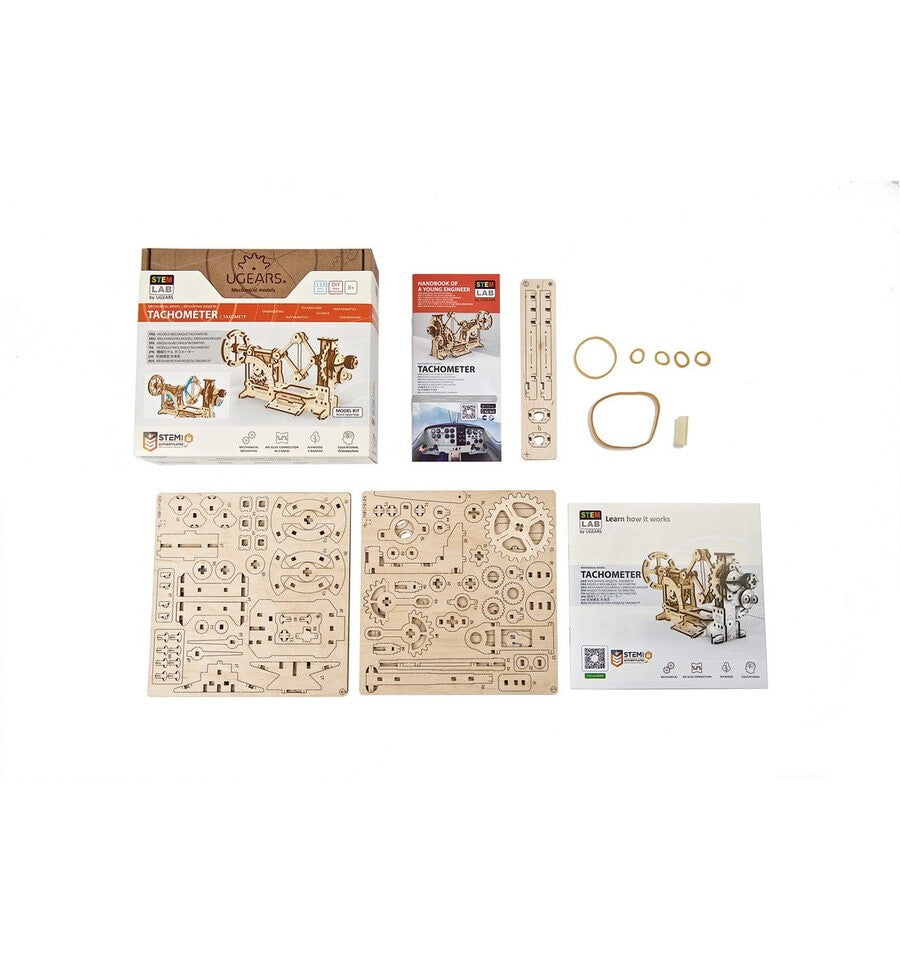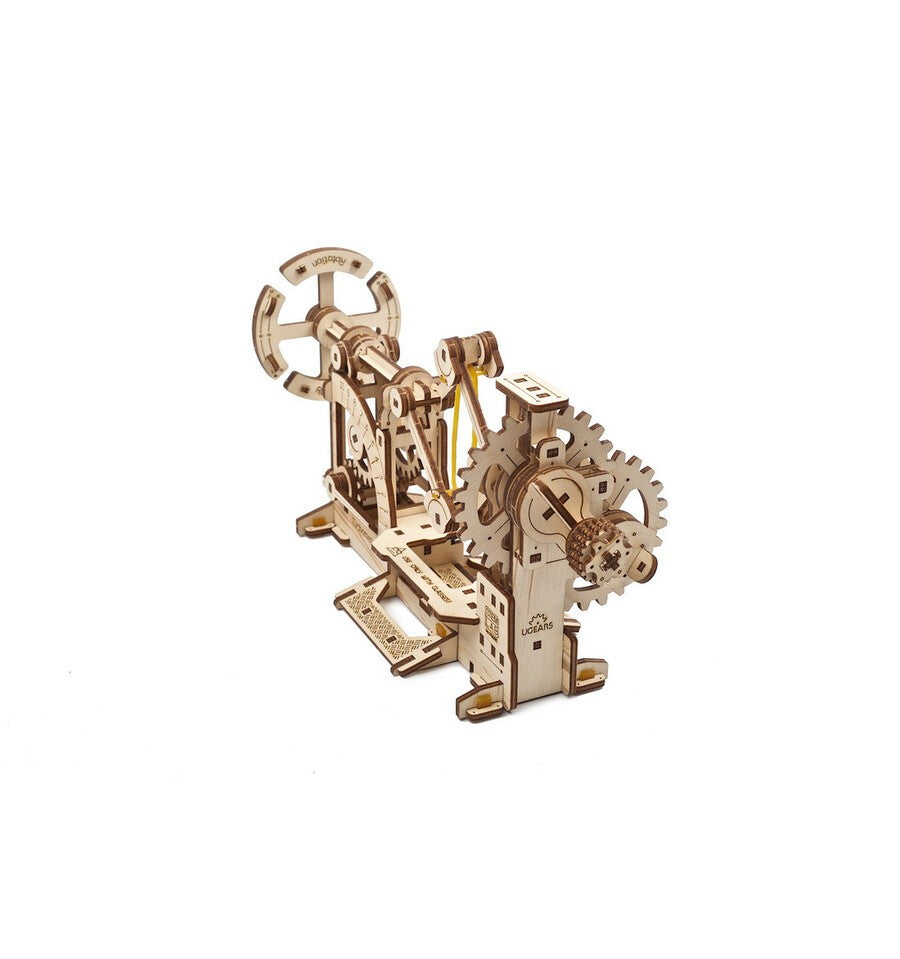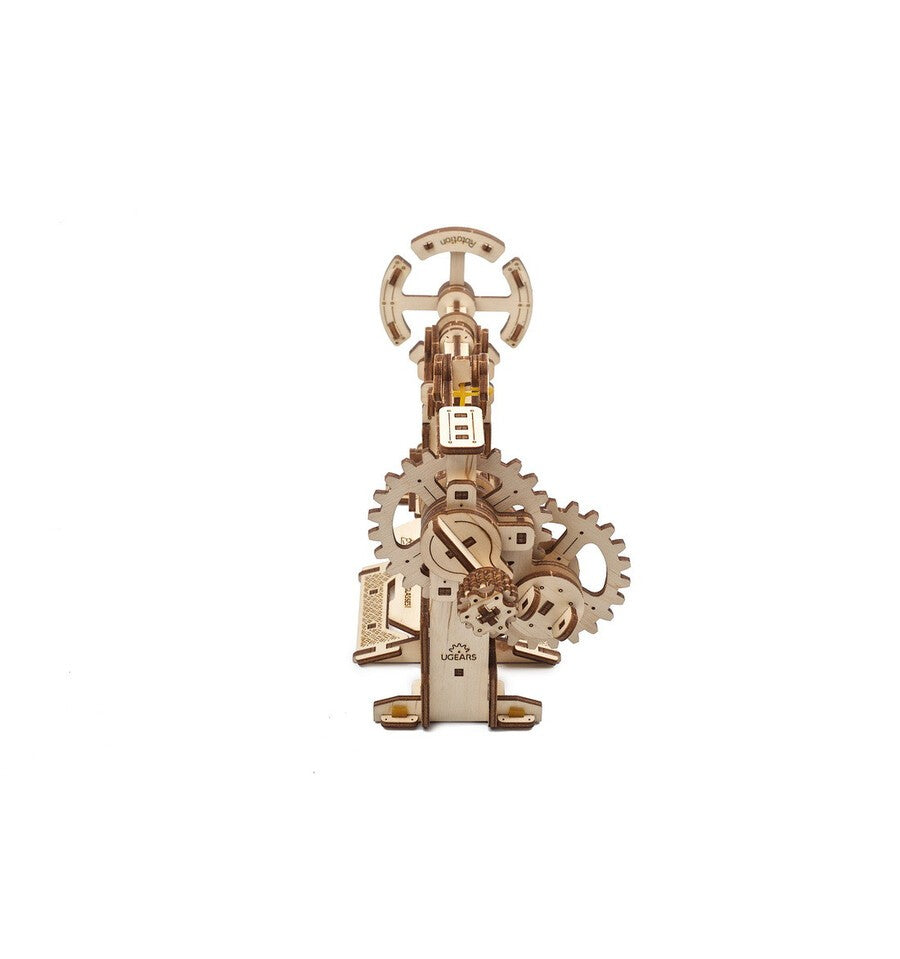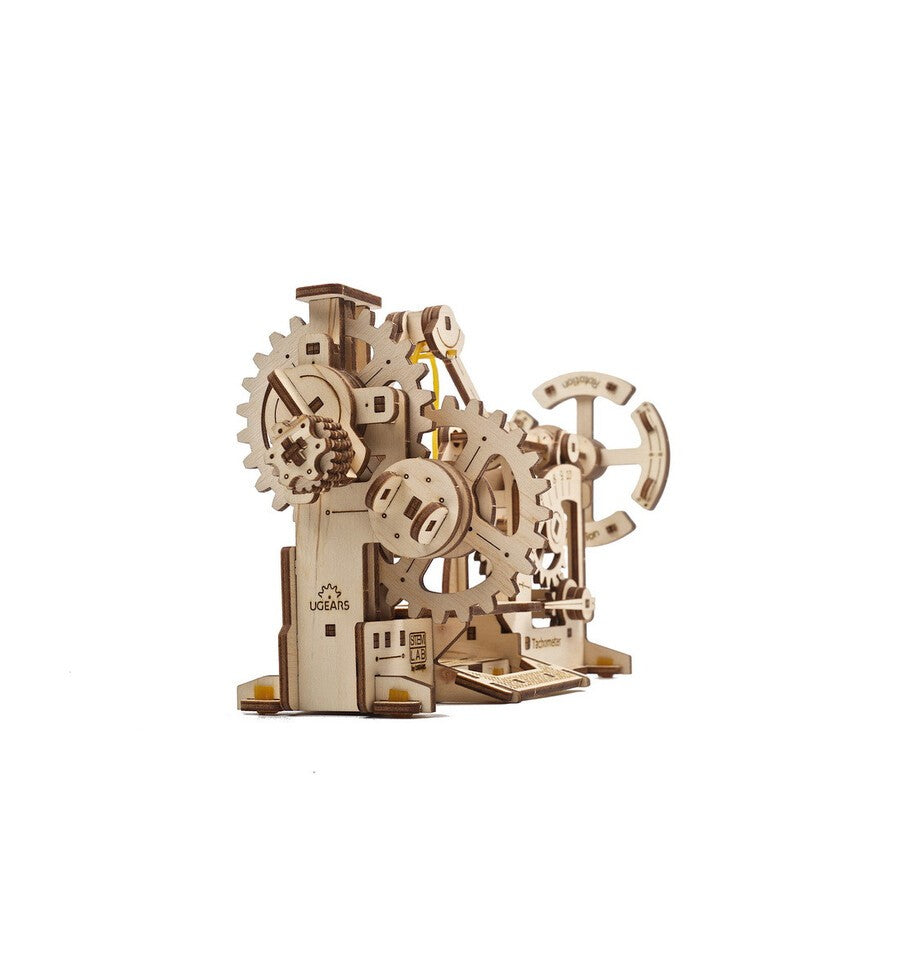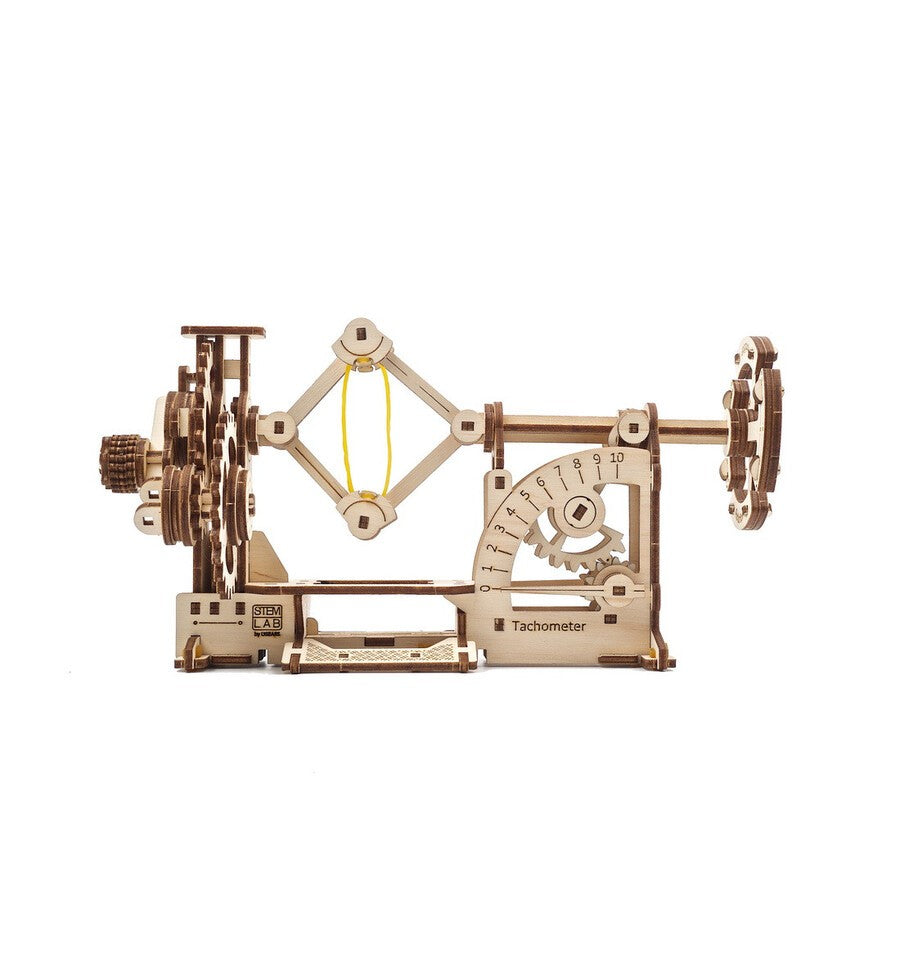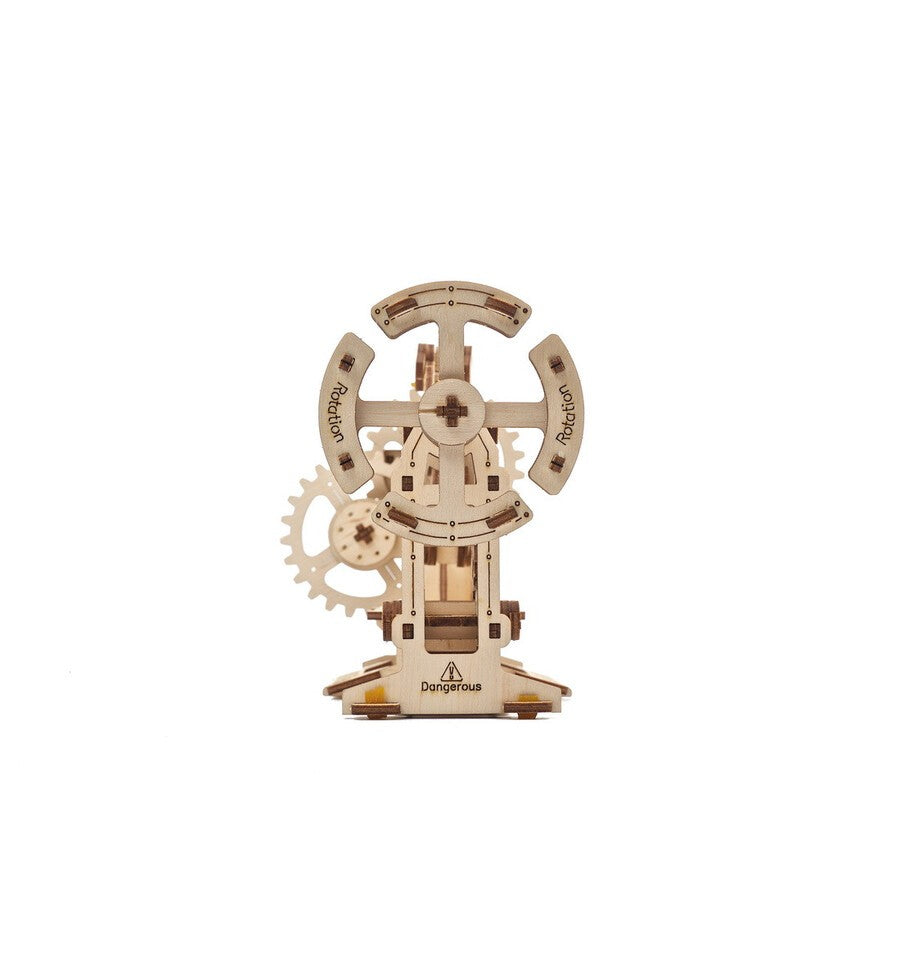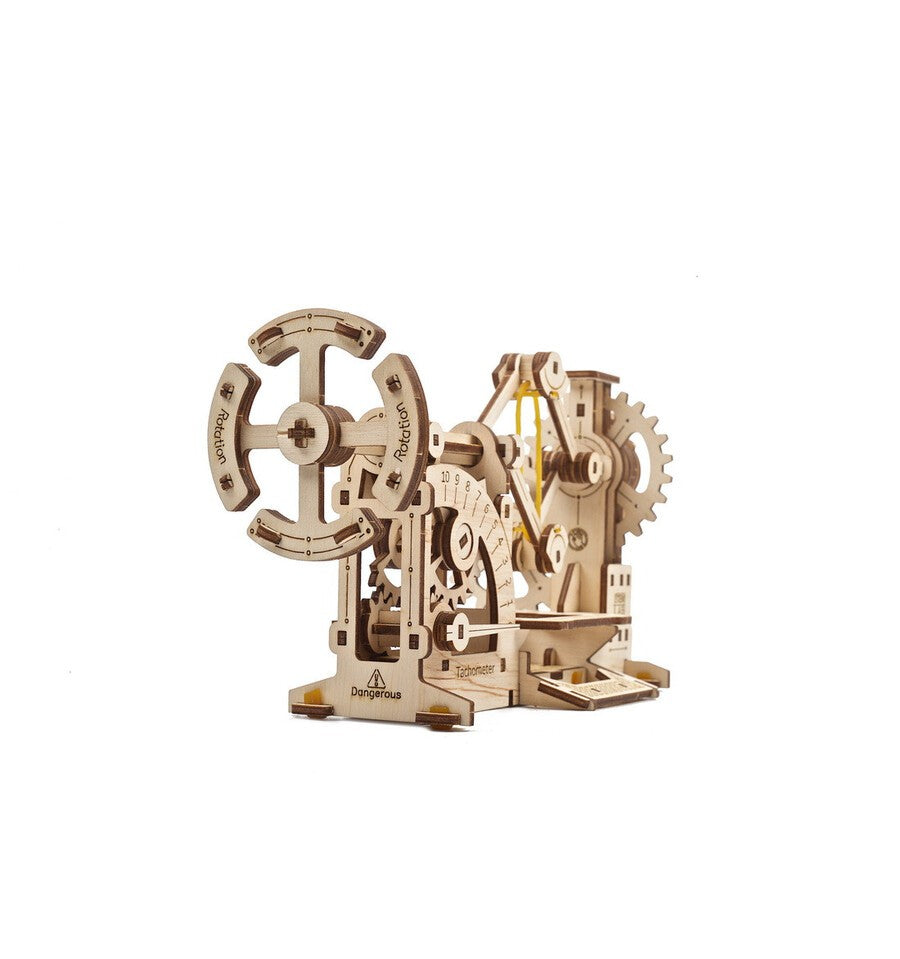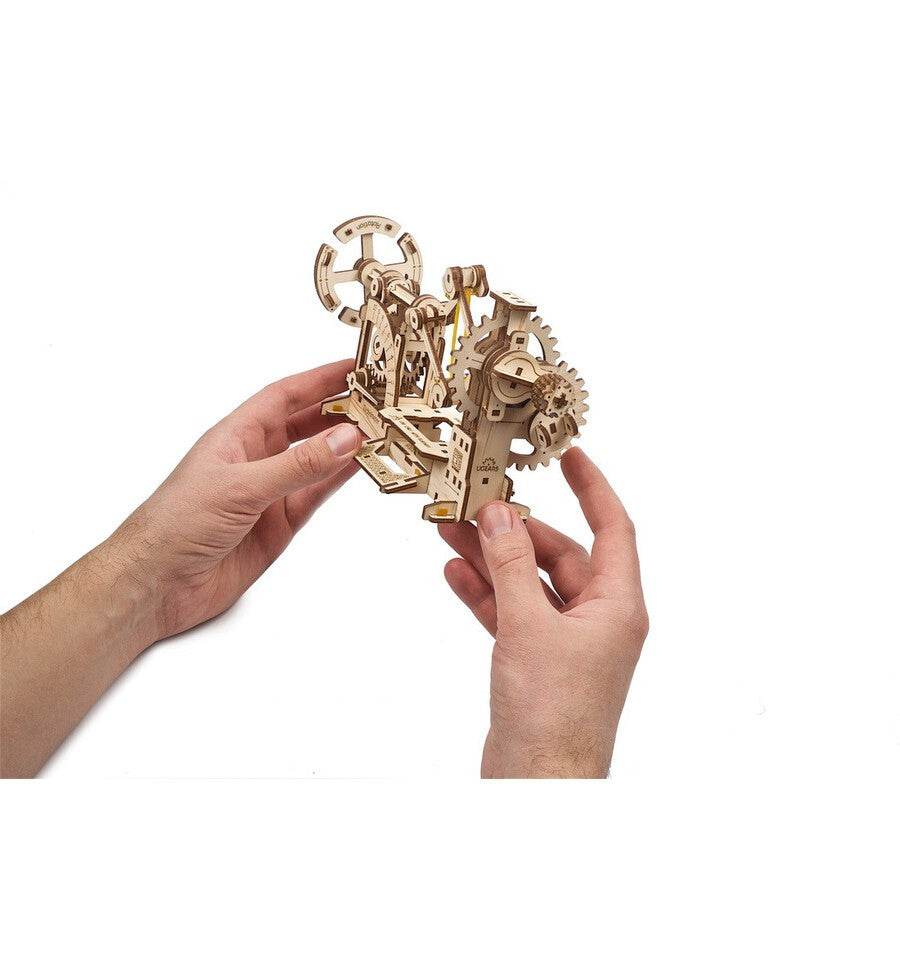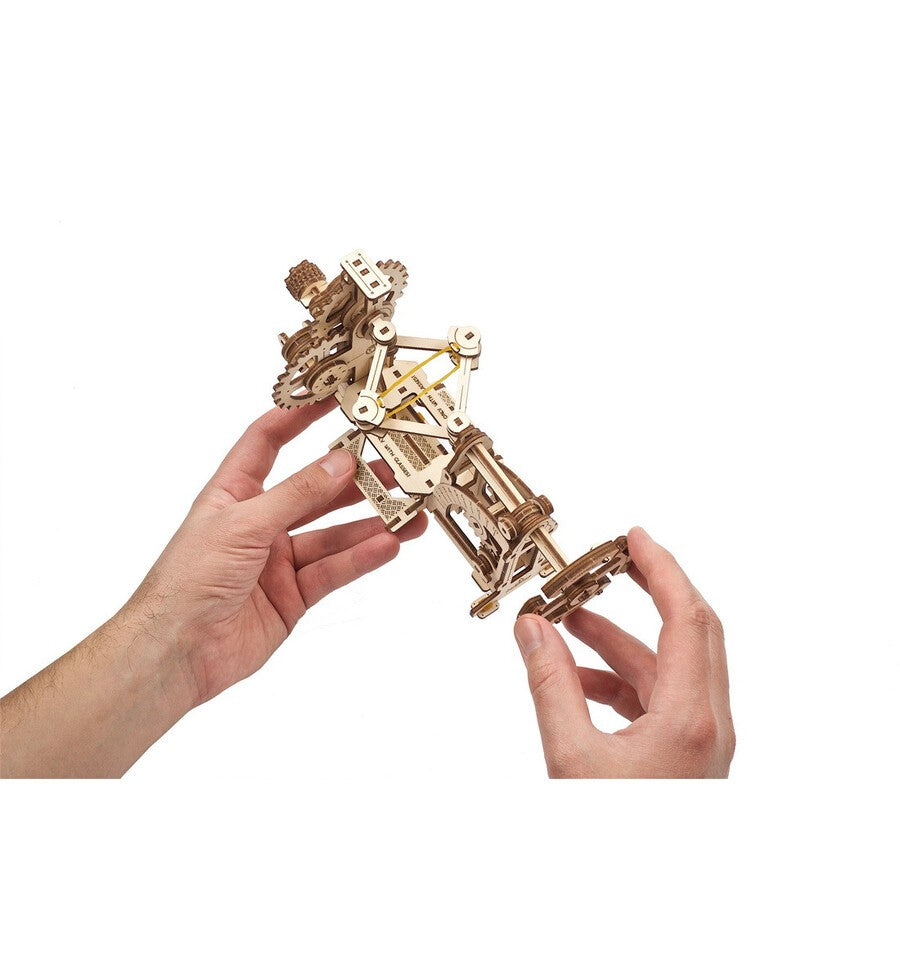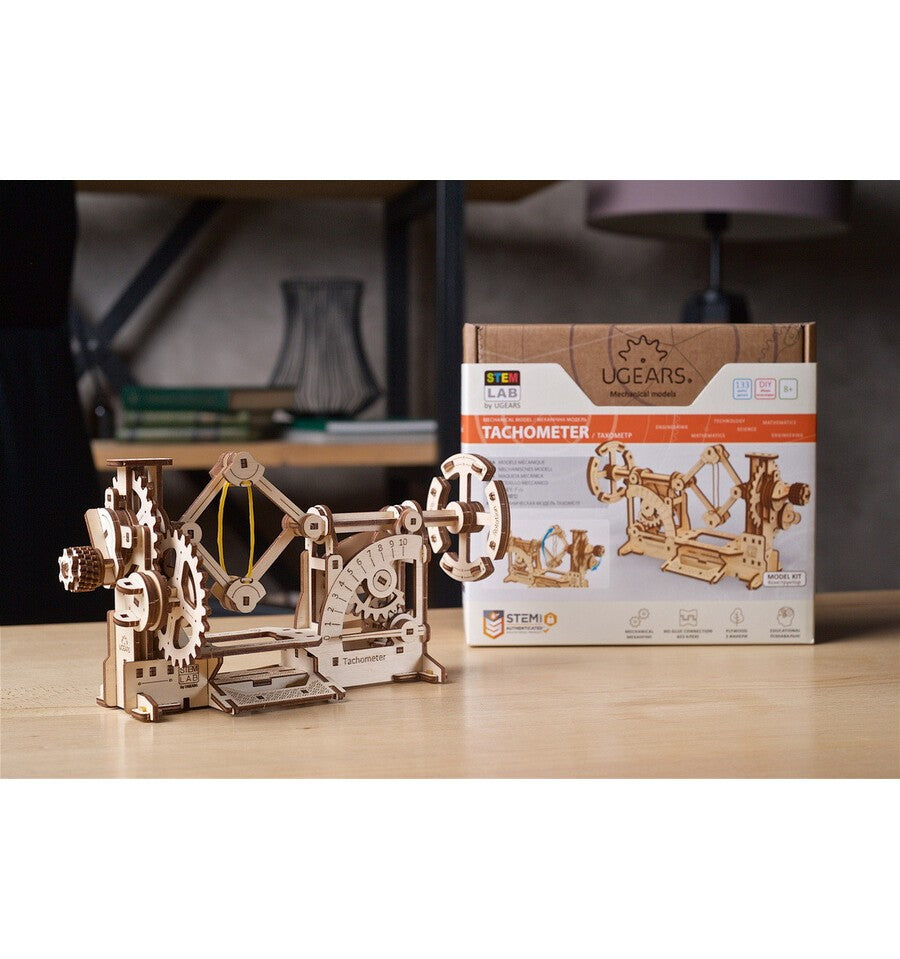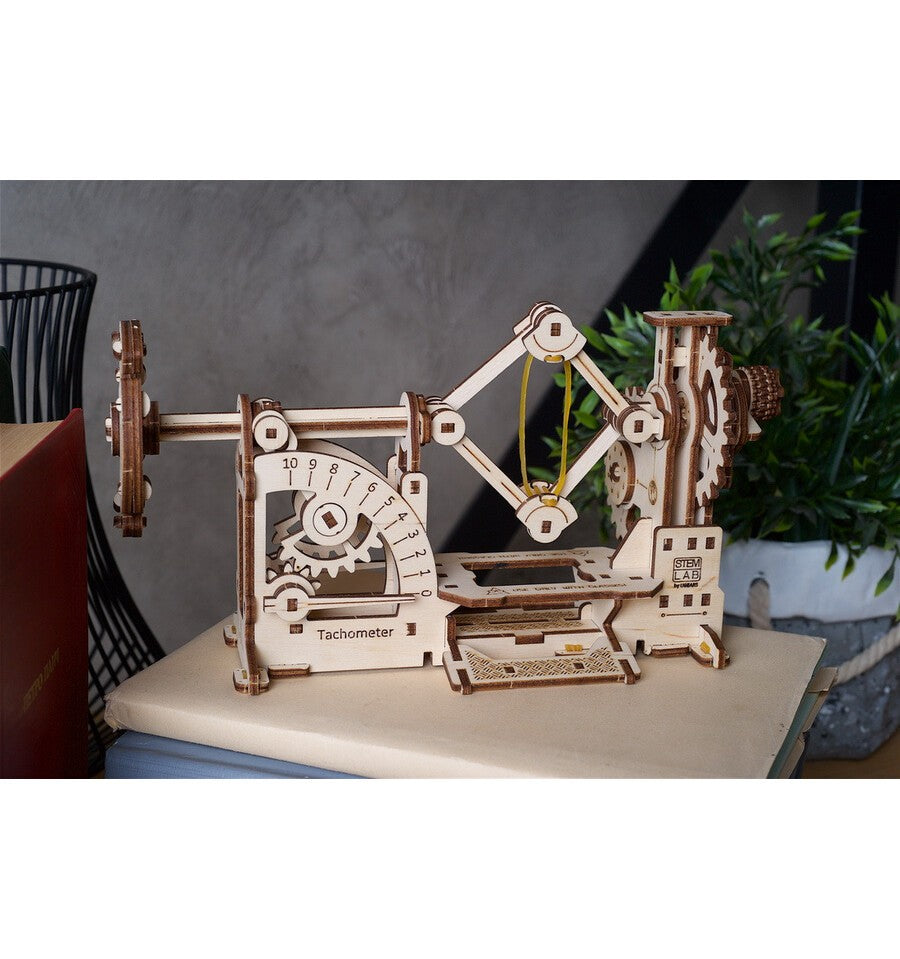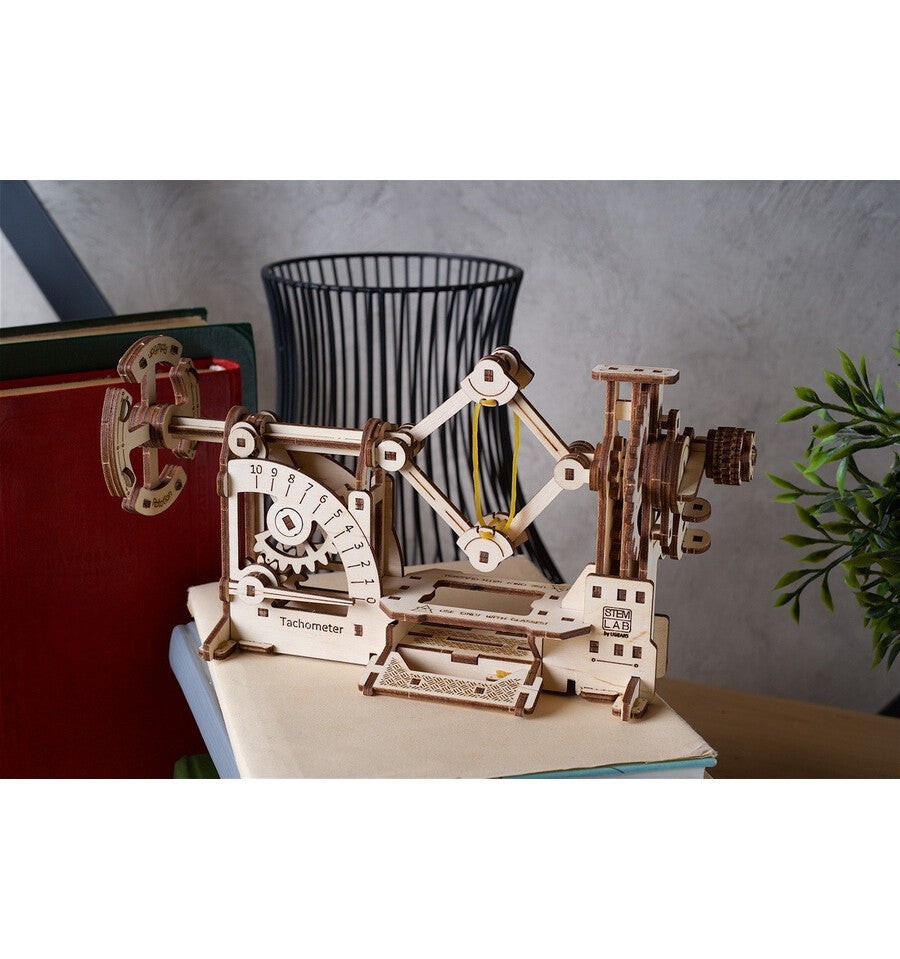STEM Lab Tachometer, 3D Wooden Kit
STEM Lab Tachometer, 3D Wooden Kit
UGears
- +10 years
Out of stock
- ⭐ 4,85/5 – 1300+ reviews
- ❤️ 50.000 families trust us
- 🎂 10 years with you
Detalles
Detalles
A tachometer (also known as a rev counter) is a device that measures the rotational speed of various parts in engines or other mechanisms. Its measurements are made in revolutions per minute (RPM). The tachometer also measures and monitors load limits to reduce or increase RPM so that the engine or mechanism operates within its optimal parameters.
Number of pieces: 117.
Difficulty: Easy.
Assembly time: 2.5 hours.
Recommended age: 8-10 years.
Box dimensions: 20.5 x 18.8 x 6.3 cm.
Model dimensions: 24 x 10.3 x 12.3 cm
More information
More information
Assemble and discover how a tachometer works
- The kit includes a QR code that takes you to the learning guide for the mechanism, its operating principle, main features, and formulas. It also includes interesting tasks!
- Immerse yourself in augmented reality and see how the tachometer works on your mobile device. Interact with it using the dedicated Ugears AR app.
Who invented the tachometer, and when?
The tachometer was invented in 1817 by the German engineer Dietrich Uhlhorn. His invention was a special device that measured centrifugal force. Beginning in 1840, these devices were used in train locomotives, and later in cars and vehicles of all kinds.
How do you use it?
A tachometer is used in mechanisms that require accurate monitoring of revolutions per minute (RPM) to avoid negative consequences due to overload. Many drivers use tachometers to know when to shift gears (in cars with manual transmissions) and to prevent over-revving the engine, thus increasing the lifespan of their cars.
What components does the Ugears tachometer have, and how does it work?
The tachometer, from the Ugears STEM-Lab collection, is a fully functional DIY model waiting to be assembled at home. Turning the crank transmits motion through the gearbox, increasing the RPM and displacing the two weights in the centrifugal unit. The higher the RPM, the further the weights separate due to centrifugal force, thus displacing a moving shaft with a flywheel. An indicator mechanism (scale) is attached to this shaft. The more the shaft moves (increasing RPM), the further the arrow on the scale moves, indicating a higher rotational speed.
The Tachometer comprises:
- Mango
- Reducer
- Weights
- Axis
- Flywheel
- Scale
Connect the Tachometer to the Variomatic, creating a new mechanism
The Variomatic-Tachometer system reflects the direct interaction between the gearbox's transmission ratio and rotational speed.
By turning the Variomatic's crank, motion is transmitted through the gearbox to the drive cone pulley. The rotation of the first cone pulley is then transmitted via the belt to another cone pulley, the driven pulley. By pressing the pedal attached to the housing, the fork holding the belt moves, thereby changing the rotational speed of the driven pulley. If a tachometer is connected to the Variomatic, the change in the rotational speed of the Variomatic's driven pulley is transmitted to the tachometer's gearbox. This, in turn, increases or decreases the centrifugal force exerted on the weights moving the shaft with the flywheel. Due to the shaft's movement, the indicator on the scale shifts to a higher or lower value. In this way, changes in the Variomatic's transmission ratio will be indicated as an increase or decrease in RPM on the connected tachometer.
The Variomatic-Tachometer mechanism
includes:
- Mango
- Reducer
- Conical transmission pulley
- Driven conical pulley
- Belt
- Pedal
- Housing
- Fork
- Reducer
- Weights
- Axis
- Flywheel
- Scale
The 3D puzzles in the Ugears STEM collection are designed to suit different age groups with a special focus on the study of mechanisms. Assembling this wooden puzzle is exciting and doesn't take long.
STEM-Lab assembly models are supplied with everything necessary in a box.
Like all Ugears wooden model kits, STEM Lab models are fun and comprehensive to assemble: Everything you need to build, learn, and discover comes in the box. This includes:
- The wooden pieces are pre-cut using a high-tech, precision laser onto high-quality plywood boards, along with other components needed for assembly. DIY kits require no glue or additional tools. The pieces are separated from the boards by gently pressing them with a finger.
- An illustrated step-by-step assembly instruction manual.
- Practical laboratory work, using your model.
- A QR code for downloading the pocket-sized teaching guide with a description of the model, its mechanism, operating principle, main features, physical and mechanical formulas, and fun hands-on activities.
- A QR code to download the AR app. A fascinating innovation from Ugears – a new impetus to learn tons of new things!
UGEARS
creates attractive and imaginative mechanical models, made of wood, that move on their own and can be assembled without glue.
Their designs are inspired by real-life mechanisms and demonstrate their love of art and ingenuity. At UGEARS, they believe that building these beautiful models should also be fun, and they dedicate their expertise to the field of engineering.
The meticulous testing and quality control of their products have a single objective: to ensure that their models provide a captivating and rewarding experience for the whole family.
Warnings and precautions
Warnings and precautions
- Not suitable for children under 3 years old.
- Small parts: Choking hazard.
- Remove all packaging elements before giving the toy to the child.
